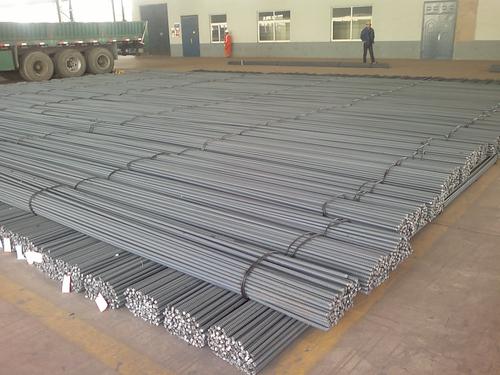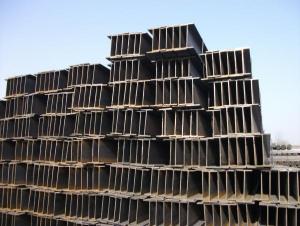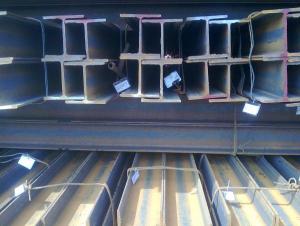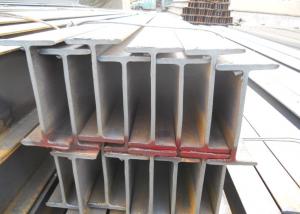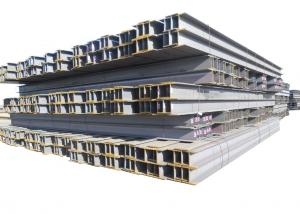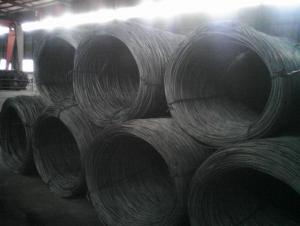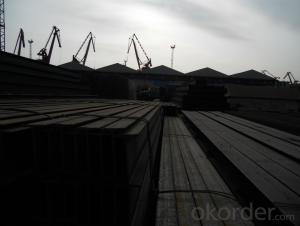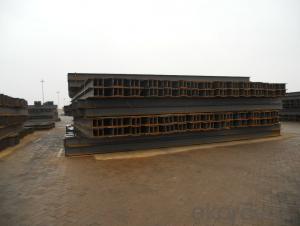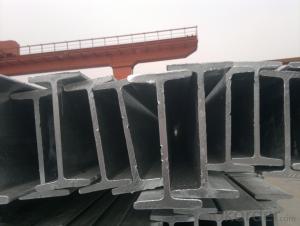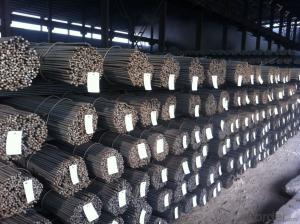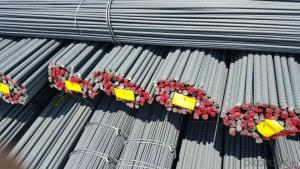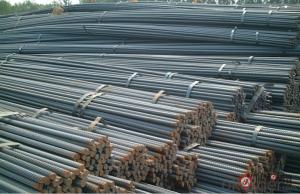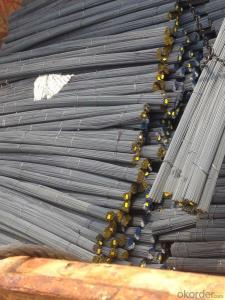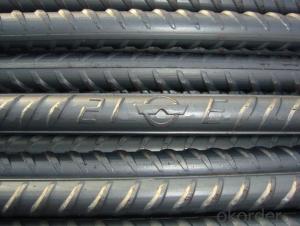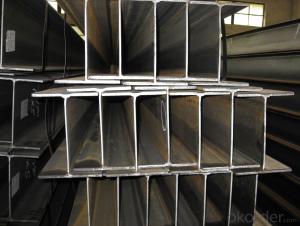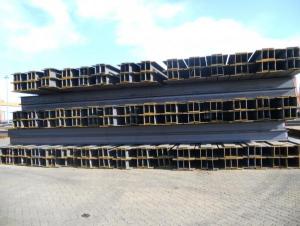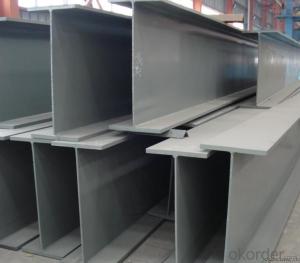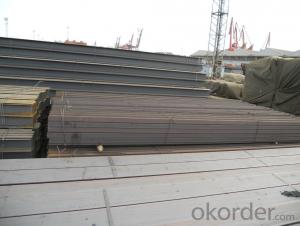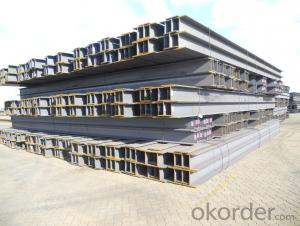HR Dedormed Steel Rebars
- Loading Port:
- Tianjin
- Payment Terms:
- TT OR LC
- Min Order Qty:
- -
- Supply Capability:
- 200000 m.t./month
OKorder Service Pledge
OKorder Financial Service
You Might Also Like
Specifications of Hot Rolled Deformed Steel Rebar:
Standard | GB UK USA | HRB335 HRB400 HRB500 G460B, B500A, B500B,B500C GR40, GR60 | |
Diameter | 6mm,8mm,10mm,12mm,14mm,16mm,18mm,20mm, 22mm,25mm,28mm,32mm,36mm,40mm,50mm | ||
Length | 6M, 9M,12M or as required | ||
Payment term | TT or L/C | ||
Trade terms | FOB, CFR, CIF | ||
Application | Building, construction | ||
Each bundle weight | 2-3MT, or as required | ||
Type | Hot rolled steel rebar | ||
Brand name | DRAGON | ||
Theoretical weight and section area of each diameter as below for your information:
Diameter(mm) | Section area (mm²) | Mass(kg/m) | Weight of 12m (kg) | Pcs/ton |
6 | 28.27 | 0.222 | 2.664 | 375.38 |
8 | 50.27 | 0.395 | 4.74 | 210.97 |
10 | 78.54 | 0.617 | 7.404 | 135.06 |
12 | 113.1 | 0.888 | 10.656 | 93.84 |
14 | 153.9 | 1.21 | 14.52 | 68.87 |
16 | 201.1 | 1.58 | 18.96 | 52.74 |
18 | 254.5 | 2.00 | 24 | 41.67 |
20 | 314.2 | 2.47 | 29.64 | 33.74 |
22 | 380.1 | 2.98 | 35.76 | 27.96 |
25 | 490.9 | 3.85 | 46.2 | 21.65 |
28 | 615.8 | 4.83 | 57.96 | 17.25 |
32 | 804.2 | 6.31 | 75.72 | 13.21 |
36 | 1018 | 7.99 | 98.88 | 10.43 |
40 | 1257 | 9.87 | 118.44 | 8.44 |
50 | 1964 | 15.42 | 185.04 | 5.40 |
Deformed Steel Rebar in warehouse
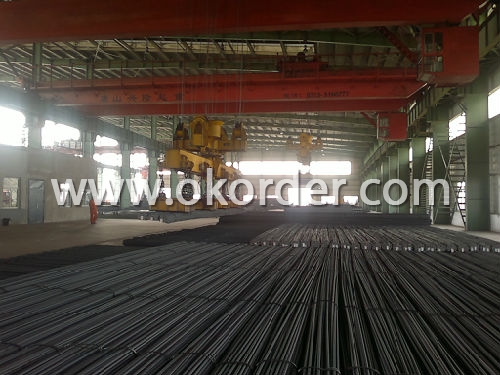
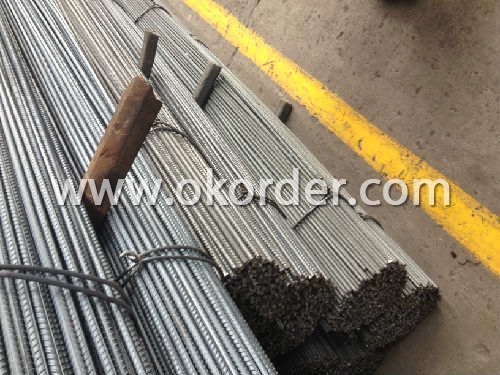
Usage and Applications of Hot Rolled Deformed Steel Rebar:
Deformed bar is widely used in buildings, bridges, roads and other engineering construction. Big to highways, railways, bridges, culverts, tunnels, public facilities such as flood control, dam, small to housing construction, beam, column, wall and the foundation of the plate, deformed bar is an integral structure material. With the development of world economy and the vigorous development of infrastructure construction, real estate, the demand for deformed bar will be larger and larger..
Packaging & Delivery of Hot Rolled Deformed Steel Rebar:
Packaging Detail: products are packed in bundle and then shipped by container or bulk vessel, deformed bar is usually naked strapping delivery, when storing, please pay attention to moisture proof. The performance of rust will produce adverse effect.
Delivery Detail: within 45 days after received advanced payment or LC.
Label: to be specified by customer, generally, each bundle has 1-2 labels
Note:
1. Our products are produced according to national standard (GB), if not, supply according to national standards (GB) or agreement as customer required.
2. Other Grade and Standard Deformed Steel Bar we can supply:
Grade: GR40/GR60, G460B/B500A/B500B/B500C,BST500S
Standard: ASTM, BS, DIN
The Minimum Order Quantity of these products is high, and need to be confirmed.
3. We can not only supply Deformed Steel Bar; if you need anything about building materials, please contact us for further information.
4. Please send us your detail specifications when inquire. We will reply to you as soon as possible. We sincerely hope we can establish a long stable business relationship.
- Q: Can steel H-beams be used in healthcare facilities and hospitals?
- Yes, steel H-beams can be used in healthcare facilities and hospitals. Steel H-beams provide structural support and stability, making them suitable for use in various construction projects, including healthcare facilities. They are commonly used in the construction of hospitals, clinics, and other healthcare buildings due to their strength and durability. Steel H-beams can withstand heavy loads and provide a solid foundation for the overall structure. Additionally, steel is a non-combustible material, which is important for ensuring the safety of patients and staff in healthcare facilities. Overall, steel H-beams are a reliable and commonly used construction material in healthcare facilities and hospitals.
- Q: Are steel H-beams suitable for supporting curtain wall systems?
- Yes, steel H-beams are suitable for supporting curtain wall systems. Steel H-beams are commonly used in construction due to their structural strength and load-bearing capabilities. They provide excellent support and stability for curtain wall systems, which are often made of glass or other lightweight materials. Steel H-beams can withstand the weight of the curtain wall and any additional loads, such as wind or seismic forces, ensuring the structural integrity of the building. Additionally, steel H-beams can be designed to accommodate the specific requirements of the curtain wall system, such as the size and weight of the glass panels, allowing for a customized and secure installation.
- Q: Do steel H-beams require special maintenance?
- Special maintenance is not usually necessary for steel H-beams. Nevertheless, it is recommended to conduct regular inspections and maintenance to guarantee their structural soundness and long lifespan. This entails promptly addressing any signs of corrosion or damage, such as cracks or bends. Furthermore, it is important to keep the H-beams clean and clear of debris or excessive moisture in order to prevent corrosion and maintain their overall state. Ultimately, despite the renowned durability and strength of steel H-beams, regular maintenance is crucial to ensure their ongoing performance and safety.
- Q: What are the different welding methods for steel H-beams?
- There are several different welding methods that can be used for steel H-beams. 1. Shielded Metal Arc Welding (SMAW): Also known as stick welding, SMAW is a common method used for welding H-beams. It involves using a consumable electrode coated in flux, which creates a shield around the weld pool to protect it from contaminants and oxidation. This method is versatile and can be used for welding in various positions and environments. 2. Gas Metal Arc Welding (GMAW): Also known as MIG welding, GMAW uses a continuous solid wire electrode and a shielding gas. This method offers high deposition rates, good weld quality, and can be easily automated. It is commonly used for H-beam welding in fabrication shops. 3. Flux-Cored Arc Welding (FCAW): FCAW is similar to GMAW but uses a tubular electrode filled with flux instead of a solid wire. The flux provides shielding and also contains deoxidizers and other elements to enhance the weld quality. FCAW is known for its high deposition rates and can be used for both indoor and outdoor welding applications. 4. Submerged Arc Welding (SAW): SAW is a highly efficient method that involves feeding a continuous wire electrode into a weld joint while a granular flux is poured over it. The flux covers the weld and prevents atmospheric contamination. SAW is commonly used for heavy-duty applications, such as welding large steel H-beams. 5. Laser Beam Welding (LBW): LBW is a precise and high-energy welding method that uses a focused laser beam to create a weld. It is commonly used for thin steel H-beams and offers excellent control and minimal distortion. However, LBW requires specialized equipment and is typically used in industrial settings. These are just a few of the many welding methods available for steel H-beams. The choice of method depends on factors such as the thickness of the material, desired weld quality, production speed, and available equipment. It is important to select the appropriate welding method based on the specific requirements of the H-beam project.
- Q: Are steel H-beams suitable for residential extensions or additions?
- Residential extensions or additions can indeed utilize steel H-beams. Steel H-beams possess numerous advantages that render them an exceptional option for maintaining the structural integrity of such extensions or additions. To begin with, steel H-beams boast a high strength-to-weight ratio, enabling them to bear heavy loads without being excessively bulky or heavy themselves. Consequently, this permits greater design flexibility and the creation of open and spacious living areas without the necessity of numerous supporting columns or walls. Furthermore, steel H-beams exhibit exceptional durability and resistance to various environmental factors, including moisture, pests, and fire. As a result, they guarantee the longevity and safety of the extension or addition, providing homeowners with peace of mind. Additionally, steel H-beams are renowned for their stability and rigidity, making them ideal for withstanding wind and seismic forces. This quality proves particularly crucial in regions prone to hurricanes, earthquakes, or other natural disasters. Moreover, steel H-beams are easy to install and can be prefabricated to specific dimensions, facilitating quicker construction and reduced labor costs. Additionally, they can be easily modified or extended if future changes or expansions to the residential structure are desired. In conclusion, steel H-beams offer a dependable and efficient option for residential extensions or additions. Their strength, durability, stability, and ease of installation render them suitable for supporting the structural requirements of a residential building, ensuring a safe and long-lasting addition to the home.
- Q: Can steel H-beams be used in multi-story buildings?
- Yes, steel H-beams can definitely be used in multi-story buildings. These beams are widely used in construction due to their high strength and structural integrity. They provide excellent support and stability, making them suitable for withstanding the loads and stresses associated with multi-story structures.
- Q: How do steel H-beams compare to other types of structural beams?
- Steel H-beams are widely regarded as one of the most versatile and popular choices among structural beams. Compared to other types of beams, such as wooden or concrete beams, steel H-beams offer superior strength, durability, and load-bearing capacity. Their unique H-shaped cross-section provides excellent structural integrity, allowing for efficient distribution of weight and resistance to bending or twisting forces. Additionally, steel H-beams can be easily fabricated to accommodate various construction needs, making them a preferred choice in a wide range of applications, including building construction, bridges, and industrial structures.
- Q: Are steel H-beams suitable for supporting gantry cranes?
- Yes, steel H-beams are suitable for supporting gantry cranes. H-beams are designed to provide excellent strength and load-bearing capacity, making them ideal for supporting heavy equipment such as gantry cranes. The shape of the H-beam allows for a greater distribution of weight, ensuring stability and minimizing the risk of bending or collapsing under the crane's load. Additionally, steel is a durable and long-lasting material that can withstand the constant stress and strain exerted by the crane. Therefore, using steel H-beams as the support structure for gantry cranes is a reliable and safe choice.
- Q: What are the different types of steel H-beam connections used in retail buildings?
- There are several types of steel H-beam connections commonly used in retail buildings, including bolted connections, welded connections, and moment connections. Bolted connections involve using bolts to secure the beams together, providing a strong and versatile connection. Welded connections involve welding the beams together, creating a seamless and rigid connection. Moment connections are used to transfer bending moments between beams, ensuring structural stability and resistance to lateral forces. The specific type of connection used in a retail building depends on factors such as load requirements, design preferences, and construction regulations.
- Q: How do steel H-beams perform in terms of vibration resistance?
- Steel H-beams are known for their excellent performance in terms of vibration resistance. The structural design of H-beams, with their wide flanges and vertical web, provides inherent stiffness and stability, allowing them to effectively resist vibrations. The shape of H-beams distributes the load evenly across the beam, minimizing any potential for deflection or bending under dynamic loads. This makes them highly resistant to vibrations caused by external forces such as wind, earthquakes, or heavy machinery. Steel, being a rigid and durable material, further enhances the vibration resistance of H-beams. It possesses high stiffness and strength properties, enabling it to withstand dynamic loads and dampen vibrations effectively. Steel also has a high natural frequency, which means it can dissipate and absorb energy from vibrations more efficiently. Furthermore, the fabrication process of steel H-beams involves welding or bolting various components together, creating a solid and stable structure. This construction method ensures that H-beams can withstand considerable vibrations without losing their integrity or performance. In summary, steel H-beams exhibit exceptional vibration resistance due to their inherent structural design, the properties of steel, and the fabrication techniques used. They are widely used in various applications where vibration resistance is essential, such as bridges, high-rise buildings, industrial structures, and heavy machinery support structures.
Send your message to us
HR Dedormed Steel Rebars
- Loading Port:
- Tianjin
- Payment Terms:
- TT OR LC
- Min Order Qty:
- -
- Supply Capability:
- 200000 m.t./month
OKorder Service Pledge
OKorder Financial Service
Similar products
Hot products
Hot Searches
Related keywords




